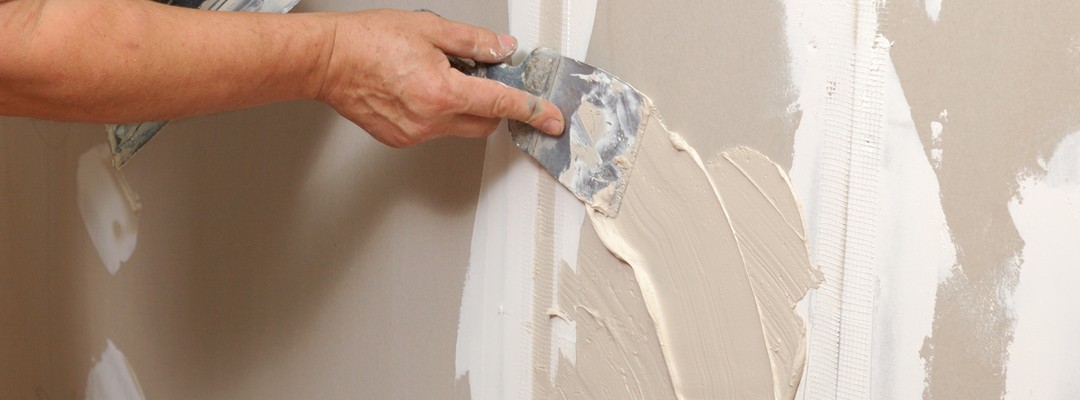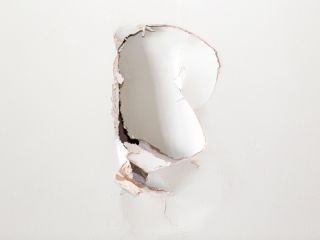Discover the very best Practices for Successful Drywall Repair Work and Installation
The art of drywall fixing and setup requires a blend of ability and accuracy. Grasping the crucial tools is crucial for accomplishing a seamless coating. Comprehending the detailed process can make a substantial difference in the result. Appropriate techniques for taping and mudding are also crucial. What remains is the knowledge of maintenance that guarantees longevity. These aspects together produce a polished end result worth discovering better.

Essential Devices for Drywall Repair Work and Installment
When embarking on drywall repair work and installment, having the right tools can substantially boost the effectiveness and top quality of the work. An energy knife is necessary for cutting drywall sheets precisely, while a drywall saw can help in making more complex cuts. Taping knives, offered in numerous sizes, are essential for applying joint substance efficiently and evenly. A drywall sander, ideally with a dirt collection attribute, helps achieve a sleek surface, minimizing the need for substantial clean-up.
Furthermore, a gauging tape guarantees precise measurements, and a degree ensures that installations are straight and plumb. Safety and security equipment, consisting of dust masks and safety glasses, must not be overlooked to safeguard against particles and dust. A stud finder aids in situating framing participants, guaranteeing safe and secure setup. By equipping oneself with these crucial tools, the repair and setup procedure comes to be extra manageable and results in a professional-quality outcome.

Step-by-Step Guide to Patching Holes
Covering openings in drywall requires a systematic strategy to assure a smooth repair service. First, the location around the hole must be cleansed and any loose particles eliminated. For tiny openings, a putty knife can be utilized to use a lightweight spackle, pushing it into the opening and smoothing the surface area. After it dries out, sanding is necessary to produce a flat coating. For bigger holes, a patch of drywall may be needed. This includes reducing a piece of drywall somewhat bigger than the hole, safeguarding it to the wall with screws, and making use of joint compound to cover the seams. As soon as the compound dries, it needs to be sanded smooth. Lastly, keying the patched location before painting will assure an even surface. Complying with these actions will certainly result in a professional-looking fixing that blends flawlessly with the surrounding wall surface.
Techniques for Smooth Drywall Setup
Achieving smooth drywall installation demands cautious preparation and implementation. It is necessary to gauge and reduce drywall sheets properly to minimize gaps. Utilizing an utility knife, installers must rack up the board before snapping it along the cut line, making sure tidy sides. Appropriately straightening the sheets is essential; beginning from the leading and working down assists preserve uniformity.
Securing drywall to the studs needs constant spacing, commonly every 16 inches, making use of screws instead than nails for far better hold. This approach reduces the threat of stands out you can find out more in time. Furthermore, surprising the seams between sheets enhances architectural honesty and reduces the visibility of joints.
Finally, using the appropriate density of drywall for details locations-- such as moisture-resistant enters washrooms-- further adds to a perfect surface. Adhering to these methods will certainly result in a smooth and professional-looking installation, setting the phase for the subsequent ending up procedures.
Ending Up Touches: Insulation and Mudding
Ending up touches, such as mudding and taping, play an essential role in attaining a refined drywall surface. Insulation includes using a thin strip of drywall tape over the joints and joints, making certain a smooth look. This process helps prevent fractures and produces a solid bond between drywall sheets. It is essential to pick the right sort of tape, with paper and fiberglass mesh being the most usual options.
Mudding, or using joint compound, adheres to insulation. This compound completes gaps and ravel the surface for an uniform finish. It is typically used in several layers, with each coat needing to completely dry prior to sanding. Correct technique includes feathering the sides to blend the compound right into the bordering drywall, reducing exposure.
When completed correctly, taping and mudding improve both the architectural and aesthetic integrity of the drywall setup, leading to a professional-quality coating.
Tips for Maintaining Your Drywall After Setup

Additionally, maintaining a constant interior humidity degree can prevent bending or mold development. Utilizing a dehumidifier in wet areas, like cellars, is advisable. It's likewise beneficial to periodically repaint areas that reveal wear, as this protects the underlying material. When moving furniture or setting up components, caution ought to be worked out to stay clear of damaging the drywall. By complying with these upkeep pointers, property owners can expand the life of their drywall, safeguarding it remains an appealing attribute of their insides.
Frequently Asked Questions
What Safety And Security Gear Is Required for Drywall Repair Service and Installment?
For drywall fixing and installation, important security gear includes security goggles to secure eyes, dirt masks to avoid inhalation of particles, gloves for hand protection, and knee pads for comfort during extended kneeling. Interior Painting.
Just how Do I Establish the Drywall Density Needed for My Task?
To establish the drywall density required for a project, one should consider the wall's architectural needs, neighborhood building regulations, and the meant use the room, generally opting for 1/2-inch or 5/8-inch drywall.
Can I Fix Drywall Without Removing Furniture From the Space?
Yes, drywall can be go to this web-site repaired without eliminating furnishings from the room. Cautious preparation and protective steps can lessen mess, permitting efficient repair work while maintaining surrounding items safe from dirt and damages throughout the procedure.
What Kinds of Drywall Are Finest for Different Settings?
Moisture-resistant drywall is ideal for cooking areas and shower rooms, while soundproof drywall matches shared wall surfaces in apartment or condos. Fire-rated drywall is best for garages, and conventional drywall functions well in basic living areas, ensuring durability and viability for numerous atmospheres.
The length of time Does It Take for Drywall Mud to Dry Totally?
Drywall mud generally takes 24 to 48 hours to completely dry totally, depending on variables like humidity and temperature (Interior Painting). Thicker applications may call for longer drying out times, while thinner layers can dry a lot more promptly. Appropriate air flow help drying
The art of drywall my latest blog post repair and setup calls for a blend of ability and accuracy. When carrying out drywall fixing and setup, having the right devices can greatly improve the effectiveness and top quality of the work. An energy blade is important for reducing drywall sheets specifically, while a drywall saw can assist in making a lot more intricate cuts. Accomplishing smooth drywall installment demands cautious preparation and implementation. Moisture-resistant drywall is perfect for washrooms and kitchen areas, while soundproof drywall suits shared walls in apartment or condos.